
|
Olympus E-410 User Report
|

|
My other articles related to the |
|
This User Report has been written by my fellow photographer and Olympus SLR system user, Ricardo Hernández of California. Ricardo is a game software developer, who "took photography as a serious hobby and second job" a few years ago. After having used a number of Canon, Panasonic, and Fuji cameras, he settled down on a Four Thirds system, with the E-300, E-330 and (now) E-410 as his basic tools, accompanied by a number of ZD lenses. As he says, he tries "to get out there to make real world photography including, and not limited to, street life, macro-abstracts, events, nature, and portraits". Andrzej: The report assumes some familiarity with other Olympus DSLRs; if you are new here, have first a look at my Class of 2007 article, discussing the E-410 and its non-identical twin, the E-510. Of course, I wouldn't be myself, not adding comments to my guest writer's opinions. In each case these will be clearly marked with my name and a different font, like this paragraph. |
|
The camera kit I received in the mail that day is the Olympus E-410 with two zoom lenses, as sold in the USA — the 14-42 mm and 40-150 mm ZD (equivalent to 28-84 mm and 80-300 mm on a 35-mm film camera). Impressions: From Boxed To First Use... Wow. Cute. Small. Invisible. Small... Nice viewfinder. Small... Cute... Um... and small... Yup, it is small. Open that box and there it is. Oh, and those lenses... where's the telephoto? I mean... that can't be the telephoto, it's too small... oh, that is the telephoto! Wow (manually plays with focal length ring, lens extends). These lenses are as feather-light. I look at the small box again in disbelief that it holds the whole system. So I decide to put in the battery (without charging it — these usually have some charge when new, and I want to play now), dial up the mode I want, and turn it on. The camera turns on fast and is ready to go. Having had my E-300 and E-330, which I have used extensively, I got a good idea of what to expect on the menus and controls, as Olympus remains relatively consistent. As expected, the new Picture Modes introduced with the E-500 JPEG engine are all there. The camera mode dial feels a bit stiff and so does the power button compared to the E-330, not that I found it objectionable. Oh, but where is the one-button access to metering, ISO, and white balance? I am used to those on my E-330 as those are the ones I use the most. Well, they are gone. The buttons are there, but Olympus decided that the E-410 will be a "my first DSLR" in their line-up. While I can understand the philosophy a bit, and at the more pro level there's something to be said about LESS is more (just ask anyone who does real world photography with their Leica M9), I really think that controls like these which have been kept for the E-510 should have been optional to be there also for the E-410. Andrzej: The arrow buttons are now non-modal, i.e., no longer serving the dual function of direct adjustment access and monitor navigation. The settings are still easily available from the Control Panel, without a need to dig into the menu system. For more on user interface in the E-410, see my Class of 2007 article. I think marketing the E-410 as a "my first DSLR" camera is a mistake: this is a pro-level camera for users who will find the incredibly small size appealing for things like street photography, hiking, travel, and so on. Fortunately Olympus didn't skip other key features, like metering modes, JPEG settings, mirror lock, custom reset, WB adjustment, and more. Off To On The E-410 turns on quite quick. The cheesy "E-System" animation, which used to be on by default on the E-500 and E-330 is gone. Many reviewers forgot or didn't know how to disable it, and it adds an extra delay to the boot-up time. I never had a problem with the start-up time on the E-330 or the E-300, and it's even less of an issue here, in spite of the sensor cleaning delay. I'd rather have the camera do this, than risk a potentially risky or cumbersome sensor cleanup, especially in the field. Andrzej: If you really think the extra 1/2 of a second spent on sensor cleaning hampers your creativity (sarcasm intended), just do not turn the camera off. After a few minutes it will go into the sleep mode, using practically no energy, waking up instantly as soon as you press the shutter release or any other control. Viewfinder The viewfinder is sharp and bright, no big complaints here, although I would like it to be bigger. Andrzej: The finder magnification in the E-410 and E-510 is 0.92×, compared to 0.90× in the E-500. Using these cameras side-by-side I couldn't see a difference. The E-300 and E-1 had a magnification of 1.0×, visibly better. Live View The E-410 has the Live View feature. For those familiar with the E-330, the E-410 only supports the Mode B, which uses the camera's imaging sensor — as opposed to a separate, dedicated one, which the E-410 does not have. Andrzej: For some background on the E-330 and its viewing system, see my articles here and/or here. The live preview is still not common in the DSLR world (although the tide is turning: Canon and Nikon offer it in their most recent models), and while it was well received by several real-world photographers when the E-330 was introduced, it left some users (and reviewers) scratching their heads. I think the main problem here was two-fold:
Live View, like many other camera features, is a tool, a valuable one for some uses. For street photography it helps to frame subjects in a more unobtrusive way, and allowing for full interaction while taking the shot. For product and macro photography it allows for precise manual focusing, avoiding potentially hard-to-do yoga positions around the camera on the tripod. It is also great to get shots over a crowd, and indispensable for underwater photography. Andrzej: This is a specialized feature, and it should be used only in situations where it has advantages over SLR viewing, not just on a whim. In those situations it can be a lifesaver; in others it is just useless. Right tool for the right job. Oh, it helps a lot in infrared, even with all our complaints voiced below. All this said, how does the E-410 stack up in this area, compared to the E-330? Although the E-410 adds real-time WB preview and a real-time histogram (which I am still not 100% sure I understand, as it seems to behave strangely), I still find the E-330 version superior, even if more confusing. More confusing because of two modes, but more useful than because you can have full autofocusing and a faster refresh. The E-410 has only Mode B, so it suffers from a considerable shutter lag as it lowers the mirror for AF and metering, only to lift it again to take a shot, which can take near a second or so. Andrzej: The Mode A in the E-330 did not come without a price (extra cost and complexity, bulk, darker viewfinder), and I really had mixed feelings about it. The other reason prefer the Live View in the E-330, is the articulated LCD, more convenient and easier to see in daylight. With the E-410 the displayed preview is next to impossible in sunlight, unless you can move the LCD to a shade, or shoot with the LCD about directly in front of you. Andrzej: An articulated monitor would make live image preview much more enjoyable and useful. This is why for tabletop photography I'm still using mostly my C-5060WZ. Even with these cons, the E-410 live view is quite useful. Even without the articulated LCD, it has still quite a wide viewing angle, especially indoors or at night, and you can still compose shots over crowds. Andrzej: The imager is also used to generate the exposure and histogram information. The bad news is that the exposure information is often inconsistent with that actually used by the camera, which is delivered by a sensor measuring the light off the (optical) viewing screen. Worse, the histogram is behaving erratically. With the Live View Boost feature on, it does not react to exposure compensation; without, it sometimes does and sometimes does not, depending on the light conditions. Come on, I'm dialing a +5 EV compensation, and the bloody thing does not even budge! Something is very wrong here. Speed of Operation I found the E-410 to be quite zippy. When you press the shutter, the delay seems to be shorter than in the E-330, and this applies in manual mode, too. It also sports a healthy buffer so that you can shoot a generous sequence of shots (around 11 for SQH, 7-8 for RAW). Andrzej: I was able to squeeze out 11 raw frames at 2.5 FPS with the E-510, and both cameras are supposed to be identical in this aspect. When saving SHQ JPEG files (1:2.7 compression), the camera took 25 frames at close to 3 FPS before slowing down; at 1:4 it was able to keep up indefinitely. (Tests done with the SanDisk Ultra III card.) Memory card save speeds are, as expected, very fast. I believe Olympus has one of the best, if not the best writing speeds on the market in this price range, at the time of this writing (October, 2007). It doesn't hurt that Olympus has finally bit the bullet and made their RAW files compressed: files are around 9.5-9.8 megabytes. The E-330 was around 13 MB (and that at 7.5, not 10, megapixels). The E-410 is one of those cameras for which you want to buy a fast memory card, though it can't take a full advantage of the 300× UDMA Lexar cards or San Disk Ultra IV. Maybe another firmware upgrade will improve that? The 133× Lexar or SanDisk Ultra III is about as fast you can go before it no longer matters. Autofocus Speed and Accuracy With the previous Olympus cameras, I have found the AF to be quite accurate, but the focusing speed not at par with some competitors — though still in the DSLR class. The E-410 changes this a bit: it definitively feels faster and snappier. One thing I did find is that this camera seems to lock focus a bit better in the dark than the E-330, but I would have to use them both side to side in a more controlled environment to say something solid about this. Andrzej: The E-500 was, in this aspect, better in low light than E-300; under good light conditions both were virtually identical. The E-410 and E-510 did now show a visible improvement from the E-500, used side-by-side with the same lens. (This is a casual observation, not a measurement.) Oh and yes, you can focus in virtually total darkness, if you use the Fl-36 or FL-50 AF assist light. Andrzej: Without an external flash, the built-in unit may be used to provide a focus-assist burst. I found it to be annoying but accurate outdoors by night, although sometimes the procedure was triggered two or even three times before locking successfully. Speaking of flash units, I was disappointed to find out that I could not use the FL-36 and the built-in flash at the same time. You can do this on the E-300 and E-330, and it's nice to get both a fill-in flash and a bounce flash at the same time — the firmware actually accounts for it when calculating the exposure. Exposure and Metering Most of the time I control exposure manually, only occasionally switching to one of the automatic modes. Here I have found that the E-410 seems to underexpose on average by 0.3 EV, something that can be easily corrected with exposure compensation. This is understandable as the camera is trying to protect the highlights — many cameras do this. Andrzej: In three weeks I've spent with the E-410, I found its metering to behave identically to that on the E-510 (as it should), and I have also shot some side-by-side test series using these two cameras together with the E-500. Maybe Ricardo was using an early version? Most of the time I adjust exposure compensation individually for every frame (aperture priority or program); on average I found the optimum adjustment to be a bit (0.3 EV) less than on the E-500; side-by-side shooting sessions with both cameras also confirm this. In low-contrast scenes with average-toned subjects usually no adjustment is just fine; in high-contrast (sunlit) ones I usually need -0.3 EV to -0.7 EV. Non-SLR cameras, using the imager itself for exposure metering, often do a better job here, as the AE logic has high-resolution data on the individual RGB channels. I have also noticed, that at low light the matrix metering is not completely accurate any more. At night or indoors it becomes even more erratic, underexposing by more. I have had to adjust by +0.7 EV or even as much as +1.7 EV to get a proper exposure under these situations. Andrzej: The only time when I have to dial a +1 EV or more of exposure adjustment is when the main subject, taking a large part of the frame, is quite bright — say, 60% reflectancy instead of the standard 12% (not 18%!), used in meter calibration. Image Samples Take a look at some pictures I took with the E-410. Due to the nature of this report, these are images straight from the camera, without any tweaking or postprocessing for presentation purposes. They do not represent my usual or best work. If not explicitly stated to the contrary, these are JPEG files written by the camera, with noise filtering set to Off. Andrzej: As always, the full frame (reduced and re-sharpened but without any other postprocessing) is shown on the left, and a 1:1 pixel-peeping fragment — on the right, without any modifications. |
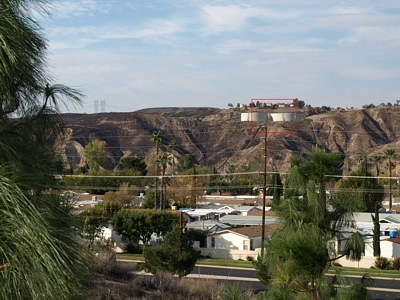
|
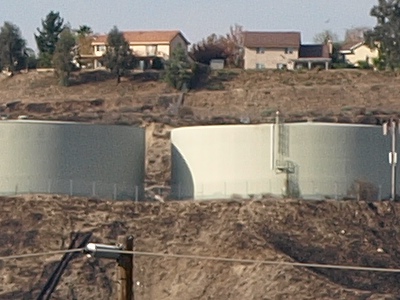
| |
|
E-410, 14-42 mm F/3.5-5.6 ZD at 42 mm, program (0 EV): 1/200 s at F/8.0, ISO 100; WB at 5300°K (sunny)
Natural Picture Mode with Sharpness -1, Contrast 0, Saturation 0 | ||
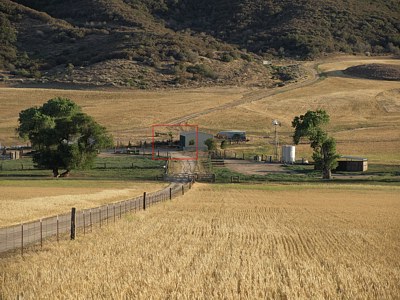
|
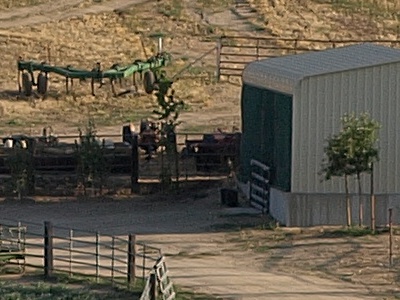
| |
|
E-410, 40-150 mm F/4.0-5.6 ZD at 70 mm, metered manual: 1/400 s at F/5.0, ISO 100; WB at 5300°K (sunny)
Natural Picture Mode with Sharpness 0, Contrast -2, Saturation 0 | ||
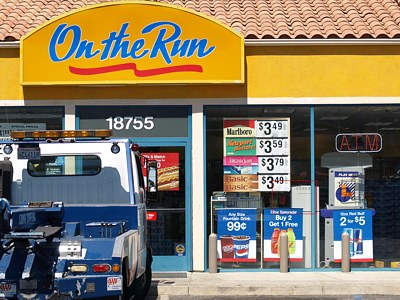
|
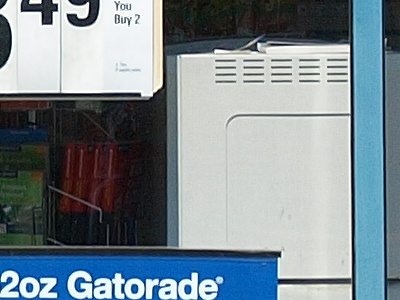
| |
|
E-410, 50 mm F/2 ZD Macro, program AE (0 EV): 1/800 s at F/5.0, ISO 100; WB at 5300°K (sunny)
Vivid Picture Mode with Sharpness -1, Contrast 0, Saturation 0 | ||
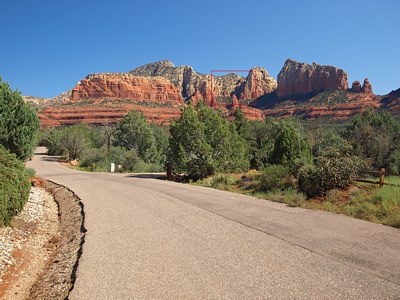
|

| |
|
E-410, 14-42 mm F/3.5-5.6 ZD at 14 mm, metered manual: 1/100 s at F/8.9, ISO 200; custom WB (not recorded)
Vivid Picture Mode with Sharpness -1, Contrast -1, Saturation +1 | ||
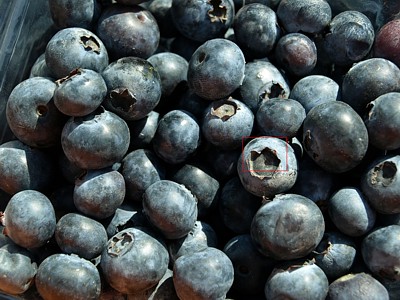
|
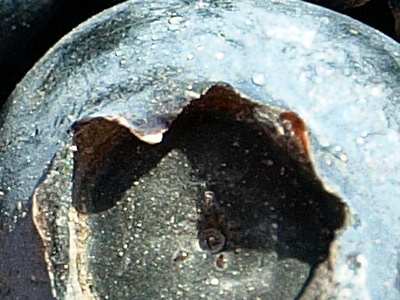
| |
|
E-410, 14-42 mm F/3.5-5.6 ZD at 42 mm, program AE (0 EV): 1/125 s at F/7.1, ISO 100; WB at 5300°K (sunny)
Vivid Picture Mode with Sharpness -1, Contrast -1, Saturation +1 | ||
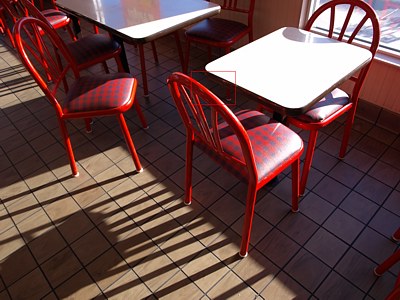
|
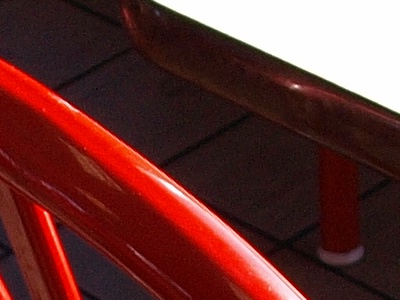
| |
|
E-410, 14-42 mm F/3.5-5.6 ZD at 14 mm, aperture priority (0 EV): 1/50 s at F/5.0, ISO 200; custom WB (not recorded)
Vivid Picture Mode with Sharpness -1, Contrast -1, Saturation +1 | ||
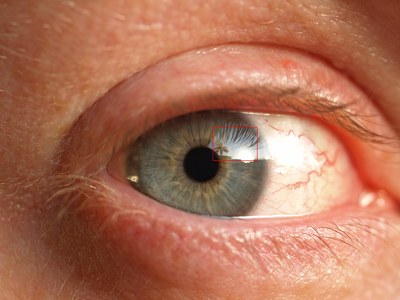
|
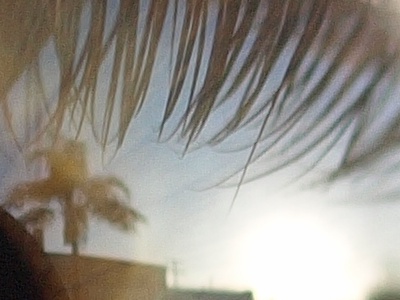
| |
|
E-410, 50 mm F/2 Macro ZD, aperture priority (+0.3 EV): 1/50 s at F/5.0, ISO 200; WB at 5300°K (sunny).
Vivid Picture Mode with Sharpness -1, Contrast -1, Saturation +1 | ||
|
There has been quite a bit of discussion about how the new NMOS sensor stacks against the previous CCD chips by Kodak. Many E-1 owners swear by the Kodak sensor, and some even say that the new NMOS sensor is a "one step forward, two steps back". Personally, I think it's the image processing what gave Olympus cameras most of their trademark look — after all, the E-330 already had a MOS sensor. So how does the E-410 hold here? I decided to check it out for myself by comparing that camera with the E-300 and E-330. Andrzej: As a reminder, the major change in the E-410 and E-510 from the older Olympus SLRs (except for the E-330) is the new Panasonic NMOS sensor, replacing the KAF line of CCDs made by Kodak. Those were, from where I stand, just excellent, so this was a decision I was (and still am, to a degree) a bit worried about. There were, I believe, two reasons for the change: (i) the MOS sensors make Live View possible; (ii) they allow for easier noise reduction (although raw noise levels are, most probably, higher); this results in cleaner high-ISO images. For more on the sensor issue see my E-510 review. In the following photos, I've set up objects chosen for their color, illuminated them with a cheap incandescent (25 W) lamp on a table, and photographed in raw with the E-300, the E-330 and E-410. The shots were then developed into the EXIF-TIFF format in Olympus Studio with no adjustments. The noise reduction for the E-300 and E-330 was off, to get the maximum detail. For all three cameras I used the "new" 14-45 mm kit lens at 25, ISO was set to 100 and 1600. Ignore the slight differences in exposure: while I was shooting manual, I was going by what each camera metered. Andrzej: For Web use, I have converted Ricardo's TIFFs into JPEGs; at left we see full frames reduced and re-sharpened; at right — low-compression 1:1 samples. First, let me show you the comparison at ISO 100. |
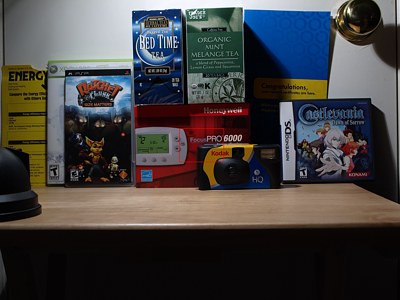
|
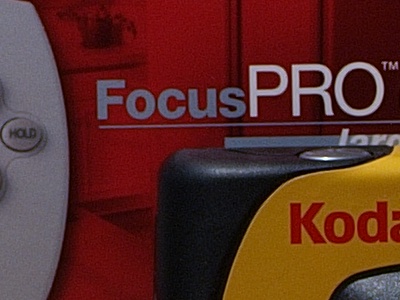
| |
| E-410; 0.4 s at F/8, ISO 100 | ||
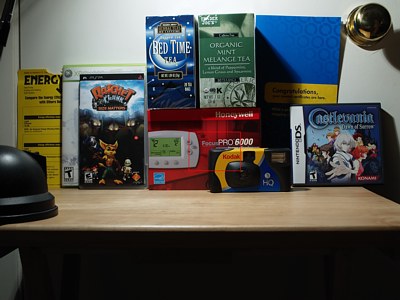
|
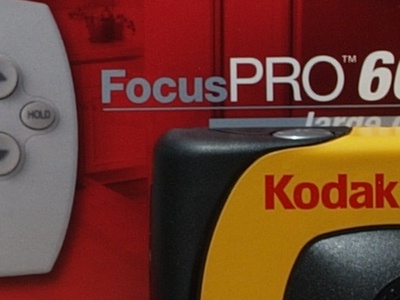
| |
| E-330; 0.625 s at F/8, ISO 100 | ||
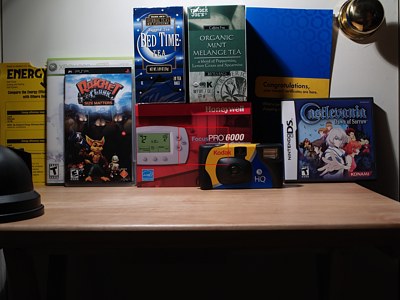
|
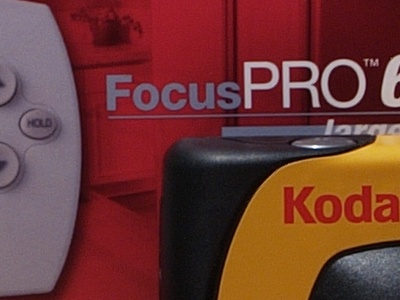
| |
| E-300, 1/2 s at F/8 | ||
|
Now, skipping everything in-between, let's have a look at ISO 1600. |
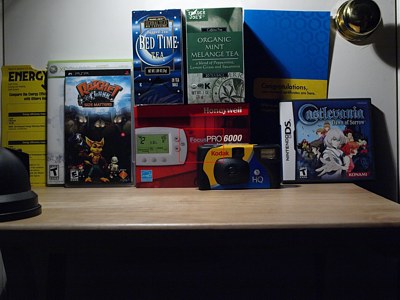
|
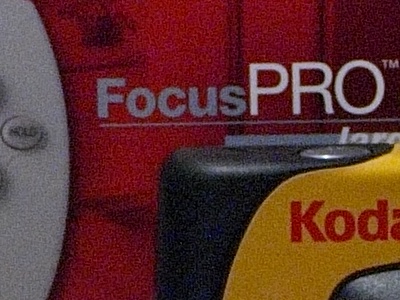
| |
| E-410; 1/25 s at F/8, ISO 1600 | ||
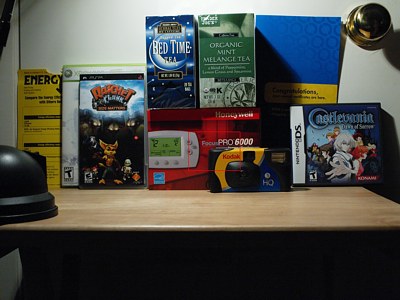
|
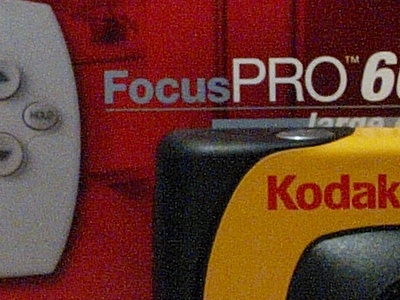
| |
| E-330; 1/25 s at F/8, ISO 1600 | ||
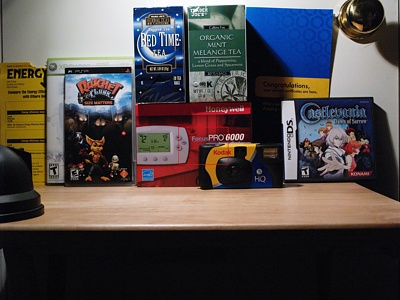
|
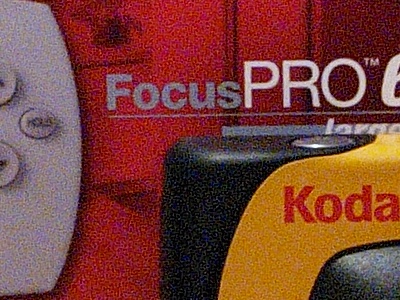
| |
| E-300; 1/25 s at F/8, ISO 1600 | ||
|
The new sensor high-ISO performance seems good, though noise handling may be more a function of new data processing than of the sensor itself. It is possible to shoot at ISO 1600 with the noise filter set to Off (more on that below) and still get acceptable results. The E-300 definitively has more chroma noise, but I am not sure how much of this is the sensor and how much the processing. Andrzej: Not having used the E-330, I was surprised how well does that camera control high-ISO noise. Still, the E-410 is smoother (noise filtering Off). Even the per-pixel noise (that's how you see it in 1:1 samples) seems to be lower; when reduced to the same image viewing/printing size, the improvement will increase. Push-Processing to ISO 3200 and 6400 I have also tried to do "ISO 3200" and "ISO 6400" — capturing an ISO 1600 raw image underexposed by 1 or 2 EV, and bringing it back to the proper exposure when converting it to RGB off-camera. The results were quite acceptable, particularly in black and white. Here are some examples of "forced" ISO 3200 and ISO 6400; night street snapshots. |

|
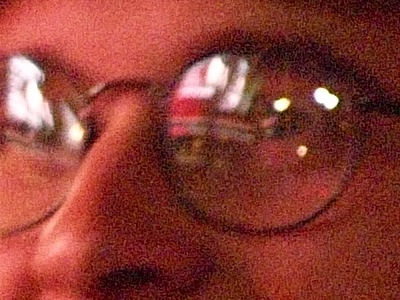
| |
|
E-410, 50-200 mm F/2.8-3.5 ZD at 200 mm; manual exposure 1 EV below metered: ISO 1600 (EI 3200), 1/40 s at F/3.5, manual WB at 6000°K (cloudy)
Muted Color Mode: Sharpness -1, Contrast 2, Saturation 0 | ||
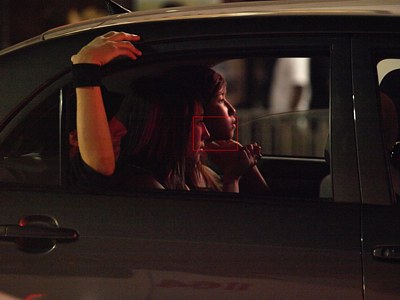
|

| |
|
E-410, 50-200 mm F/2.8-3.5 ZD at 158 mm; manual exposure 2 EV below metered: ISO 1600 (EI 6040), 1/40 s at F/3.5, manual WB at 6000°K (cloudy)
Muted Color Mode: Sharpness -1, Contrast 2, Saturation 0 | ||
|
This is quite remarkable: exposing at the super-high EI of ISO 3200 or 6400 still yields usable results, if you push the raw-to-RGB development a bit! Andrzej: The red tint in these images is the photographer's choice: white balance was set to 6000°K (cloudy). Most photographers would choose 5300°K (sunny) for night street shots, or even a lower setting. Image Conclusions My subjective conclusions regarding the new sensor (and how it compares to the older ones) are as follows:
Two other sensor-related issues: dynamic range and high-ISO banding, will be discussed further down. Andrzej: While Ricardo's remarks on color rendition are based on his whole experience with the E-410 (not just the samples shown), conclusions of this type are difficult, and often risky, to make. These effects may depend strongly on the subject, exposure, adjustments to contrast and saturation, plus some other factors. What a human eye perceives as just one shade of yellow can be, depending on a subject, either an (almost) single wavelength of "yellow" light, or many different mixes of other wavelengths (generally: red and green). The sensor/processing pipeline may, and usually will, translate each of these combinations somewhat differently into the standard RGB components, and our perception will then be different in every case. This is why I'm usually afraid of making similar statements, and even now, after three months of using the E-510 and three weeks of using the E-410 (again: both are identical in this aspect) I'm still not sure if I generally prefer their color rendition over that of the E-500 or not. (For the record: I'm most happy with the E-500 in this department.) Dynamic Range As some rumors want it, the E-410, indeed, seems to have a bit less dynamic range than the previous Olympus cameras. I would say, 0.3 EV to 0.5 EV less than the E-330 and about 0.3 EV less than the E-300/E-500. Is this really a problem? While I have been always enamored with the dynamic range of the Fuji SR sensor cameras, I find the issue a bit overblown. For photographers who know what they are doing, and for many photography domains and styles, this is a non-issue. For beginners, depending on the situation, it could become a bit of an issue in some situations. Andrzej: My guess, based on experiments with exposure bracketing, would be 0.3 EV or so as compared to the E-500 or E-300; insignificant for practical purposes. Still, in high-contrast, sunlit scenes I have to apply exposure compensation with more caution now than I had with the E-500. The chance of losing detail in highlights and shadows increases when the contrast setting in raw-to-RBG conversion is too high (which is the default in the E-410/E-510; I always have it tuned down). I have also found that the ISO 1600 is a bit under what other cameras seem to do at this rating, down to about an estimated ISO 1400. I have done some comparisons on that with the E-330 histograms and shutter speeds. Andrzej: Sensor sensitivity definition is not a simple affair: it involves, among others, the scene contrast and the tonal curve of the resulting image. While during my film era I did some digging into the subject, I do not consider myself to be qualified to voice opinions on the subject. Still, the second series of samples (60 frames!) in my E-510 noise filtering article indicates that the metered exposure difference between the ISO 100 and 200 settings is about 0.3 EV less than the expected factor of 2. This means that either the nominal ISO 100 is really ISO 125, or all the higher settings result in an effective sensitivity a tad below the nominal value (those settings seemed to be spaced properly). Interestingly, Phil Askey of DP Review reports, in his review of the E-410, the nominal setting of ISO 100 to be actually close to ISO 125, and the nominal ISO 1600 — to 1250. Ricardo's own samples in the New Sensor section above show the ISO 1600 metered exposure of his controlled-environment scene to be the same for all three cameras he's been using: 1/25 s at F/8. Camera Settings After some reviews and some testing, my recommendations for settings are, as a starting point at least, as follows:
For all three modes I prefer to keep the noise filter at Off for the reasons explained in the next section. Andrzej: Note that Ricardo's recommendations do not result in image processing being identical in Natural and Muted modes, as each mode starts from a different reference point My own picture mode preferences are more conservative than Ricardo's. For details see the Picture Mode section of my E-410/E-510 customization article. Remember that these settings do not affect the raw image, but rather the raw-to-RGB conversion, be it in-camera or in postprocessing. Noise Filter For the first time in their camera line-up, Olympus is giving the user some control over noise filtering. The E-1 had an on/off setting, useful with homogeneous color areas (like smooth blue skies), but the E-410 (and E-510) offer more: for degrees of noise filtering, from Off to High. Andrzej: A reminder: in Olympus terminology Noise Filtering reduces the random noise by using some smoothing algorithms in postprocessing, while Noise Reduction uses dark frame subtraction to remove the static noise. See my noise article for more. Initially I thought Off completely disables the noise filter, but some experimentation has proved that the camera is still doing some noise processing in that setting, and so does the current Olympus Master (or Olympus Studio). The really good news is that with the noise filtering set to Off, the camera captures an incredible amount of detail. Most importantly, the kit lenses are up to the challenge (more on those below). In subjective terms, it looks like a "12-megapixel E-330" when compared to that camera. If you are shooting at ISO 800 or ISO 1600, using low or even standard noise filtering can yield acceptable results depending the amount of light and what you want to do. I have found that even ISO 1600 with no noise filter can work with enough light, keeping a lot of detail. Andrzej: You may, again, refer to my Noise Filtering and Sharpness article for more on this. You can set the noise filtering to Low or Off, and be done with it. This will work fine for most images, releasing the amazing potential of the new sensor combined with the excellent kit lenses (or, even better, some higher-grade ones). But a side benefit is that using the Standard or High setting can be useful in some situations. For example, I would consider using Low or Standard for male and Standard or High for female portraits. One word of caution: programs performing the raw-to-RGB conversion (including the current Olympus Master and Olympus Studio) do not offer this degree of adjustment; they also initially apply the in-camera setting to the opened image. You may have to investigate the matter further by experimenting; I rarely use the raw format. Andrzej: The off-camera software performing the raw-to-RGB conversion may be, and usually is, behind the specialized firmware doing the same in-camera. This seems to be true not just for the third-party software, but, in this case, also for the Olympus Master and Olympus Studio. Banding at High ISO's Andrzej: Refer to my newly-updated general article on image noise, for some introduction to the problem. Yes, the banding is here, but the issue is limited to high ISO (maybe even ISO 400, when you are trying to bring out the under-exposed shadows). My impression is that the NMOS sensors tend to suffer from it when there are high horizontal contrast areas: for example, a white cup with dark areas on both sides, especially when you try to bring the shadows up. Andrzej: The process of "bringing up the shadows" translates a relatively narrow range of low input values into a wider one on output: this amplifies not only the image detail, but also any artifacts present, including noise and any patterns. Here are examples how the E-300, E-330 and the E-410 behave in this situation. All shots are all at the nominal ISO 1600, underexposed by 2 EV and adjusted during the raw-to-RGB conversion. Andrzej: Reduced full frames are at the left, and full-scale (1:1) samples at the right. The banding effect is best seen in the XGA (1024×768) resampled images, linked to from the respective captions. |
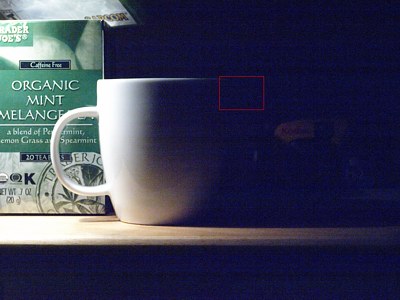
|

| |
|
E-410, ISO 1600, manual exposure (2 EV below the metered value): 1/160 s at F/8, push-processed from raw
(see the XGA version) | ||
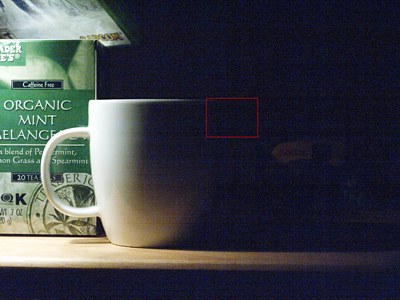
|

| |
|
E-330, ISO 1600, manual exposure (2 EV below the metered value): 1/200 s at F/8, push-processed from raw
(see the XGA version) | ||
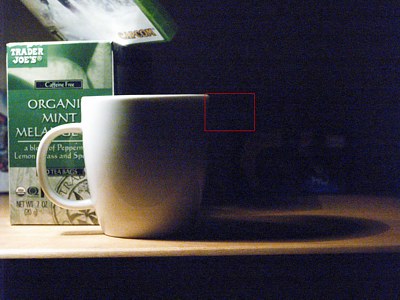
|

| |
|
E-300, ISO 1600, manual exposure (2 EV below the metered value): 1/200 s at F/8, push-processed from raw
(see the XGA version) | ||
|
The Kodak CCD in the E-300 handles the banding best, followed by the E-330 and then the E-410. While the effect is not very obtrusive, those who use postprocessing to recover shadow detail at high ISO should keep it in mind before making the plunge — just remember that cameras from other makers also suffer from this, so you may have to research the issue also for competing models. Andrzej: Even without push-processing of raw images, just in plain JPEG format from the camera, I was able to see some banding in dark, uniform areas on both the E-510 and E-410 at ISO 1600 and, to a lesser extent, ISO 800. Usually it does not bother me a lot, but the effect does not seem to be very predictable. The Kit Lenses: Wow! These are far and away the best kit lenses I have ever seen of any brand, make, or model. They are sharp, manage chromatic aberrations very well, and, to my surprise, have manual focus rings with better feedback than the medium-grade ("Pro") Olympus lenses I have, including even the 50-200mm! (I hope the upcoming, revamped 50-200 mm will have that kind of feedback.) Do not take the above as brand-bashing. I am just giving credit where due. When cameras are being compared, very seldom do I see also a comparison of the kit lenses included into the base price. Sometimes it is best to buy the camera body only, and then a better lens of that brand. This, of course, affects the final price — something most reviews do not account for. The 14-42 mm and 40-150 mm ZD lenses included in the E-410 kit are super-small, super-light, superbly sharp, and give you a range equivalent to 28 mm to 300 mm (in terms of a 35-mm film camera). A nicely-rounded system in a small bag — you don't have to buy anything else for a while, unless you have some special needs. It is quite remarkable that Olympus was able to offer the two-lens camera kit at this price. The only drawback I can see in these lenses is the plastic mount. Olympus is one of the last makers (the last?) to do this, as their previous kit lenses used a metal mount. We will see how long these mounts can last in daily use. The lenses also do not show the focal distance. This does not bother me, but it would be nice to see the distance on the monitor, since the lens communicates this information to the camera. For example, it is hard to set the focus to infinity at night. Battery And Power The E-410 doesn't support a vertical grip with extra power. That's understandable: it would go against what the camera is about — small. But, to my disappointment, there is no option for an external power supply. What about tethered shots from a laptop for product photography? On my E-330 with a full-time Live View use, the battery lasts about 2 hours, and while I do not have the numbers for the E-410, it would be nice to have an external power source for such applications. Olympus decided to use a new lithium-ion battery for the E-410 (and E-400) — the BLS-1, not the BLM-1, working with their SLRs from the E-1 to the E-510. This was done to reduce the overall camera size: the new battery is smaller. It lasts less than the BLM-1 in the E-510, but still quite a bit: Olympus rates it at 500 shots under the CIPA testing standard, which includes 50% of shots with the flash; without flash the number climbs. While I have two extra batteries (one bought for having two and another because I am paranoid), I have never ran out of power when doing a project on a single charge. Andrzej: In automatic flashes, the energy usage depends on light output and, therefore, on the subject brightness and distance, not to mention the ISO setting and aperture used. The "new" BLS-1 stores 8.3 Wh, i.e., 77% of 10.8 Wh stored by the "old" BLM-1. Both are based on the same chemistry (hence identical voltage and discharge characteristics), so I would expect the E-410 deliver 77% of shots, compared against the E-510 under identical conditions (with image stabilization off) — not bad! With full-time use of the Live View, battery life drops by about 50%. This is not a typical usage, though, so I'm not complaining. I would, however, recommend buying an extra battery, since they are proprietary and you cannot use readily available AA batteries in case of an emergency. The full charging time clocks around 3.5 hours. This is better than five hours for the standard charger used with the BLM-1 on other Olympus SLRs, though Olympus also sells a 2-hour "fast" charger for that battery. Andrzej: Nothing comes free; faster charging means higher current and more energy dissipation; therefore — shorter battery life (fewer charge cycles). Dual Memory Card Slots Like all recent Olympus digital SLRs, the E-410 supports two memory cards at once — one Compact Flash and one xD-Picture. The latter, a proprietary format supported by Olympus and Fuji, may be on its way out, but I am happy to see two card slots: the xD can be used when the other one runs out of space, malfunctions, or is left behind. (The built-in RAM in some point-and-shoot cameras is not the same, as it is usually just symbolic.) Photo Playback The E-410 has a fast photo playback (faster than on previous models), with several levels of thumbnail size so you can see one, four, or up to 25 frames at once. You can multi-select several for deletion or copying to the other card, and you can zoom up to 14× magnification. The only drawback is that the image you see is a 2-megapixel, highly-compressed JPEG, which means that once you get to a 7× or 10× zoom, there's no further benefit in evaluating the image sharpness. Andrzej: The ORF (raw) or JPEG files from the E-410 or E-510 store another JPEG version inside, as a part of the EXIF information. That version is used for image review, and it is 1600×1200 pixels in size, compressed down to 350 kB or so (1:15), depending on the image. That's in addition to yet another embedded JPEG, used for thumbnail review, which is 160×120 pixels (about 8 kB compressed). You can extract these easily (if you're not afraid of command-line programs) with the ExifTool application by Phil Harvey. Worth Upgrading To? If you are starting from zero and you want a small, fast, and affordable SLR, the E-410 dual-lens kit (or even the single-lens package) makes for a great DSLR and a great introduction to the Four Thirds system. If the size is not so important to you, I would recommend the E-510, as that camera has better ergonomics and more direct access to some settings, not to mention the beauty of image stabilization with all your lenses. Upgrading from the E-300 to the E-410 will deliver a "wow" factor: high-ISO performance, focusing speed, general speed and ease of operation, and Live View. A similar experience awaits E-500 users, if with somewhat reduced intensity. Still, if you are generally happy with your E-500 and if it is fast enough for you, just keep using it. Really. (Unless you want the new kit lenses...) Upgrading from the E-330 is a bit different. If you really need a slightly faster camera (you probably don't) and if you really need the small size (you might), or if you are tempted with the new kit lenses (now we are talking!), the E-410 may be for you. But if you need the Live View mode A, being generally happy with how your E-330 performs, and if you are happy with its size, keep using it — there is no point in upgrading. The E-410 is not a slam dunk of an upgrade compared to the E-330 in my view — and there are a couple of things that are worse in the new model. As a current E-330 owner, while I love the size and speed of the E-410, I'm often having that "oh, I forgot about that, it was neat!" sense when using the E-330 recently... For the Readers in regions where the E-400 was sold: unless you absolutely need the Live View and plan on using it a lot (product photography? macros?), or unless you are missing a bigger buffer for continuous shooting, keep your E-400. (In fact, ignore what I said and just keep your E-400.) What if you have "the legend" — the E-1? I think the E-410 can be a great complementary camera, much smaller and much faster, but you may as well consider the cheaper E-400 if you can, or swing to an E-330 — if you need articulated Live View in Modes A and B. Conclusion It's been now a few months I've spent with the E-410. This is a camera that has a certain sex appeal for being so small yet so functional and powerful. I always liked small cameras, as I find myself having them around more often. Also, for things like street photography a smaller camera brings less attention to the photographer and is less intimidating. The E-410 is the smallest and lightest DSLR on the market (the honor shared with the E-400). Just numbers don't do it justice: you have to see and handle it for yourself. It certainly has all the features needed to take great photographs. A great and tweakable JPEG engine, compressed raw format for those who prefer that way, mirror lock-up, remote infrared shutter activation, fast writing speeds, full manual controls, access to all Four Thirds lenses, and more. If small weight and size matters to you, this is the camera to get. Fast, snappy, small, invisible, great photographic detail, and an affordable price. But remember, at the end of the day, it is you, who takes the pictures, not the camera. Take a look at this camera for the convenience it brings to your photography and for your photographic needs, not to "take better photos with a better camera". |

|
My other articles related to the |
|
Evolt® and Olympus® are registered trademarks of Olympus Corporation.
This page is not sponsored or endorsed by Olympus (or anyone else) and presents solely the views of the author. |
| Home: wrotniak.net | Search this site | Change font size |
| Posted 2007/10/29; last updated 2007/11/01 |
Copyright © 2007 by Ricardo Hernández and J. Andrzej Wrotniak Pictures ©2007 by Ricardo Hernández |